Sometimes historical events occur in such an absurd manner that they seem too strange to recount in modern times.

James Madison, the 4th President of the United States.
In the 1780s, after being elected as the President of the United States, George Washington decided to send a letter to Congress essentially saying: “I look forward to working with you; this will be very exciting!”
However, George was not particularly good at communication and was generally busy. Therefore, he asked his close friend James Madison to draft the letter for Congress. When the members of Congress received the letter, they decided they needed to respond, not wanting to slight the new president. They wanted to send back a letter that essentially said: “We are very glad that you are excited; we are too!” And they determined that none of them could write the letter better than… James Madison. So, James wrote a response to the letter he had originally drafted to send back to George.
George decided to reply with a few sentences like: “Oh, well, I’m glad you are excited too!”, and once again, he asked his close friend James to pen the response. Congress received the letter and, once again, not wanting to create an awkward situation, decided to reply with another letter that essentially said: “We are very glad that you were excited to see us excited!” And once again, they asked James Madison to draft the response.
Thus, James Madison, the future 4th President of the United States, wrote four letters back and forth between “George Washington” and “Congress.” He was too embarrassed to tell anyone about this while the correspondence was taking place.
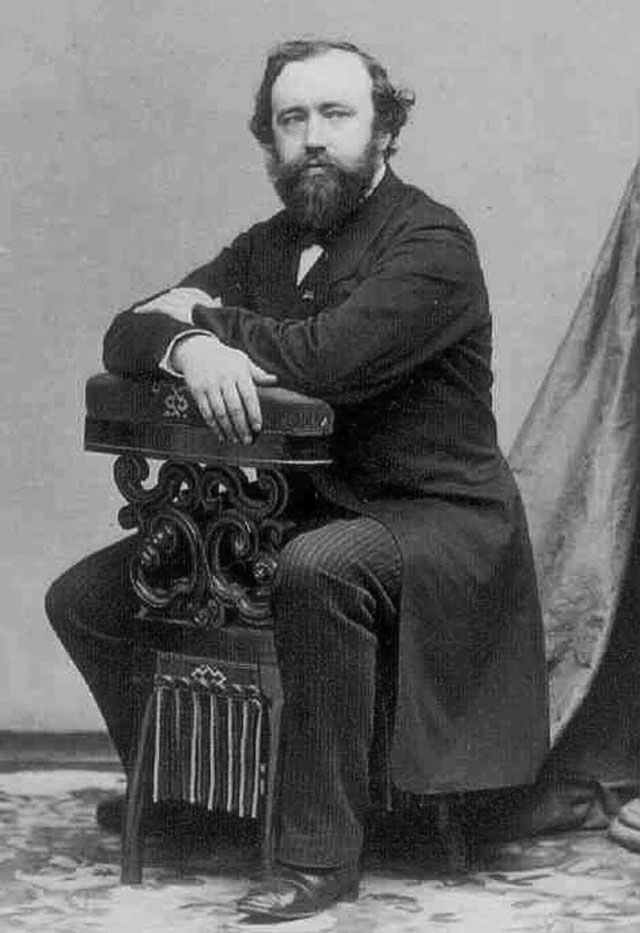
Musician, instrumentalist, and craftsman Adolphe Sax.
As one of eleven children born to the instrument-making couple Charles and Maria Sax, Adolphe was extremely accident-prone from a very young age.
At the age of three, he fell from three stories and hit his head on the stone floor below. He once mistakenly drank from a bowl of acid, believing it to be milk. He swallowed a large needle, which he was lucky enough to retrieve later. He flew across his father’s workshop and suffered severe burns when a barrel of gunpowder exploded. He fell into a hot cast-iron pan on a burning stove. He often slept in a room where furniture was varnished and waiting to dry, somehow avoiding poisoning and suffocation. He was also hit on the head with a slate tile while walking down the street. He even fell into a river and nearly drowned.
Yet this very child, who was continuously failed in assassination attempts by some unseen force, grew up to have the courage and intellect to invent the saxophone.
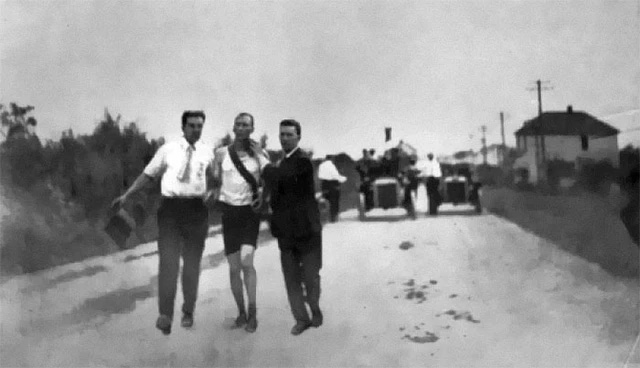
The chaotic Marathon event at the 1904 Olympics in St. Louis, USA.
The first finisher completed most of the journey in a car. He had intended to drop out and take a ride back to the stadium to change clothes but started running again when he heard the cheers of the crowd.
The second finisher was carried across the finish line by his coach, his legs convulsing. Coaches had refused to give him water throughout the race, opting instead for a mixture of brandy and rat poison as a form of doping. Doping wasn’t illegal at that time, so he received the gold medal when the first guy was discovered to have ridden in a car.
The third finisher is strangely forgotten by everyone.
The fourth finisher was a mailman from Cuba, who raised funds to attend the Olympics by running continuously across his country. He participated in the race in a suit and long pants (the latter of which was later torn by a rival with a knife). This guy might have finished first (or second, after the car rider) if he hadn’t taken a one-hour nap on the roadside after eating some rotten apples he found.
The 9th and 12th finishers were from South Africa and ran barefoot. South Africa did not send a team to compete, and these were students who happened to be in town and thought participating in the race would be fun. The 9th place finisher was even chased about 1.5 km by a pack of wild dogs during the race.
Half of the participants had never raced before. Some died. The organizers of St. Louis had only one water station along the entire route. This, combined with the dusty roads from passing cars, is believed to have contributed to the fatalities.
The Russian delegation arrived a week late because they were still using the Julian calendar, an old calendar system.
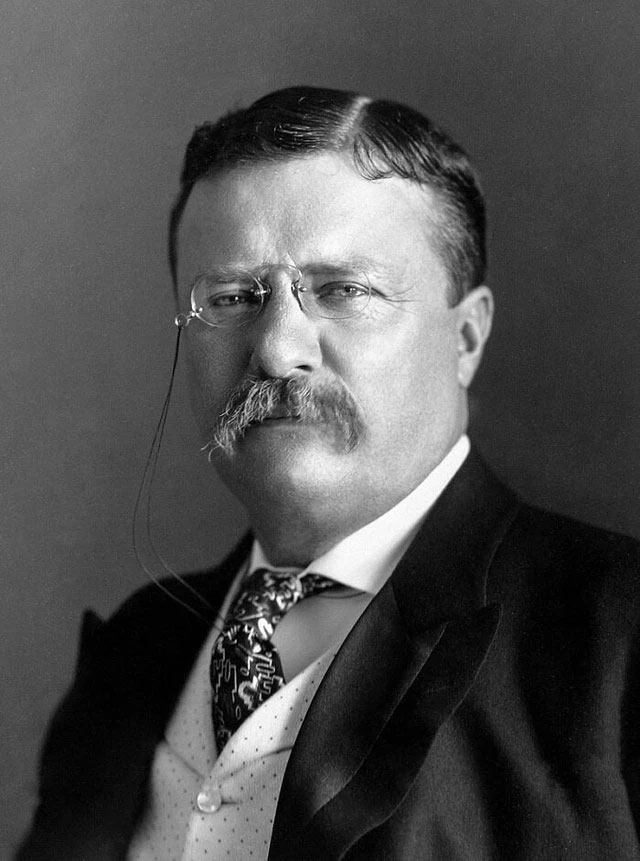
Right after being shot, Theodore Roosevelt continued his speech for 90 minutes before going to the hospital.
The assassination occurred around 8 PM on October 14, 1912. The then-President of the United States, Theodore Roosevelt, was shot with a pistol from a distance of about 1.5 meters. The calmest person at that moment was the victim himself, who advised everyone not to kill the assailant and requested that he be handed over to the police.
His personal doctor asked the driver to take him straight to the hospital, but Roosevelt believed the bullet had not penetrated his lung, so he insisted on being taken to deliver his speech.
“Hey folks, I need you to stay as quiet as possible,” he said as he stepped onto the podium. Then came the shocking truth: “I have just been shot.”
He then unbuttoned his vest to reveal a blood-stained shirt underneath. He reached inside and pulled out a thick stack of speech papers, about 50 pages long, with a large hole in the top. Perhaps this stack of paper saved him by preventing the bullet from piercing his heart.
After that, this 53-year-old politician delivered his 90-minute speech as originally planned. During the speech, he made sure to glare at aides who tried to help him. Only after finishing his speech did he agree to go to the hospital for treatment. X-ray results showed that the bullet had lodged in his fourth right rib, near the heart. Fortunately, the stack of paper, the steel glasses case, and his thick coat helped save his life.
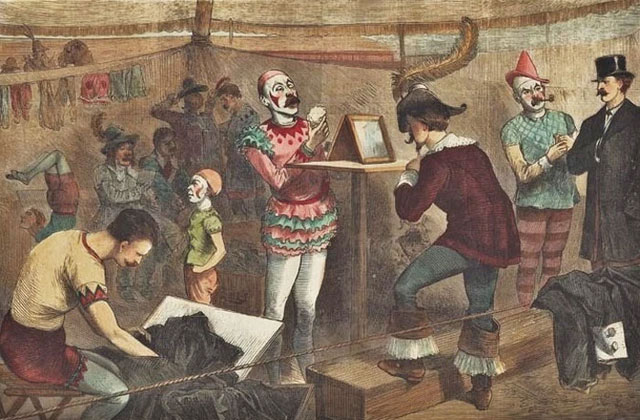
The riot at the Toronto Circus in 1855.
Members of the fire department and some clowns started a ruckus due to a disagreement at a brothel, leading to a fight. The clowns won, but later the firefighters returned to the circus and began attacking in retaliation. The firefighters won this time, but the violence was halted when the militia arrived. Throughout the entire process, the police did nothing, so the city government fired all the police officers, without exception, and began to rebuild a new police force.

Hitler, Tito, Stalin, Trotsky, and Freud, five of the world’s leading politicians who lived in the same neighborhood in Vienna, Austria, in 1913.

Napoleon attacked by a swarm of rabbits.
During a rabbit hunt set up to commemorate the Treaty of Tilsit, Napoleon wanted to go hunting, and the organizers somehow procured hundreds to thousands of rabbits. On the day of the hunt, they caged the rabbits around the area where the hunt would take place.
They released them after everyone had settled in, but instead of being frightened, the rabbits surged forward, attacking the hunting party. Initially, the hunters thought it was funny. But then things became chaotic, and Napoleon and the others had to flee from the swarm of rabbits.
The famous emperor of France was not seriously injured but experienced a panic and anxiety attack. Some experts later suggested that the reason the rabbits charged at Napoleon was that they may have mistaken him for the person who feeds them.
During World War II, the British secret service created a sabotage device that included a dead mouse with explosives stuffed into its rear. At that time, to be safe, if you saw a dead mouse, you would use a spade or shovel to pick it up and throw it in the incinerator. But this would activate the explosives and blow up the entire building. The obsession with bomb mice was enough for the Nazi forces to call in their bomb disposal team whenever they spotted a dead mouse.

The raid on Saint-Nazaire.
During World War II, British commandos loaded explosives onto a ship, attempting to infiltrate Germany’s largest dockyard. However, the operation was discovered, and all coastal artillery opened fire, bombarding the ship relentlessly. Miraculously, it did not explode. The soldiers tried to steer the ship at maximum speed straight into the dock gate, causing it to lift half out of the water and become lodged, preventing it from being towed away. Subsequently, a small special forces team attacked the dock facilities before retreating, but unfortunately, the ship did not detonate because the timer malfunctioned.
The next day, a group of German officers and officials arrived to inspect the British ship while the commandos had been captured nearby and were being tortured for information. For them, the mission had failed, and they now faced brutal interrogation.
Suddenly, the explosives on the ship detonated. The massive explosion destroyed the dock, killing hundreds of soldiers sent to protect it, along with all the German officers and officials who had come to inspect the ship.
Those being tortured also heard the explosion and broke into smiles of joy.
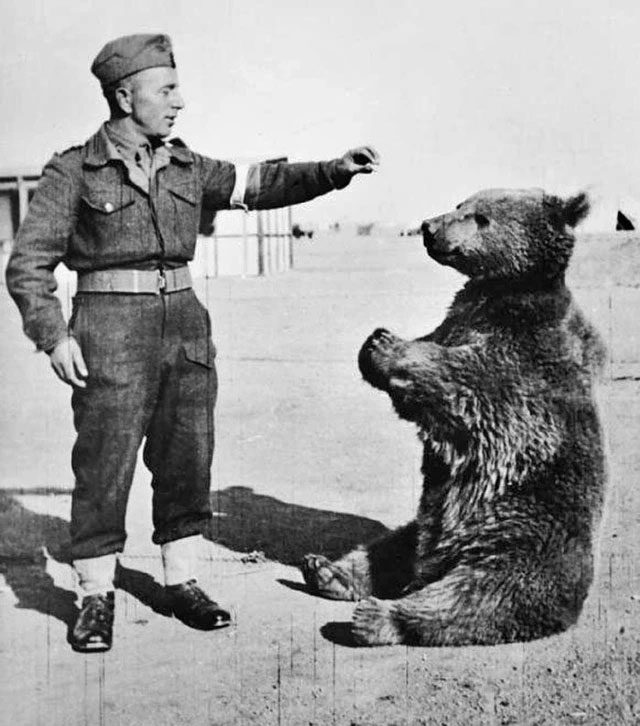
A bear named Wojtek served in the Polish Army during World War II, assisting his soldiers by carrying heavy ammunition boxes into battle, saving countless valuable time.
Essentially, the bear was raised in the army and enlisted as a soldier when his division had to board a ship that prohibited animals. To legitimize the bear’s identity, they issued him a paybook, rank, and serial number for the “soldier” Wojtek. They even taught the animal to salute like a real soldier. The bear survived the war and died of old age in a zoo in 1963.
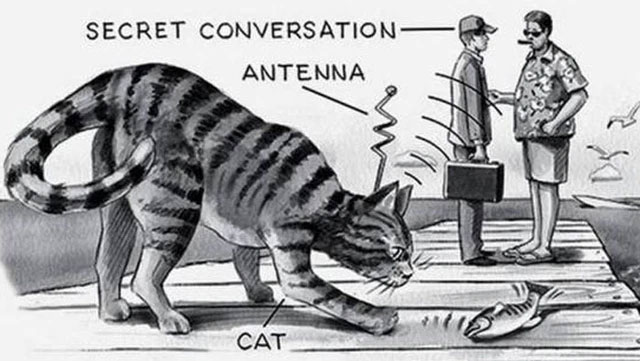
Implanting an antenna into a cat’s body.
In the 1960s, the CIA spent months and tens of millions of dollars to implant an antenna into a cat’s body and then trained it to sit near targets to eavesdrop on their private conversations. On the day of the first official test, they released the cat. It wandered into the street and was quickly struck by a taxi.
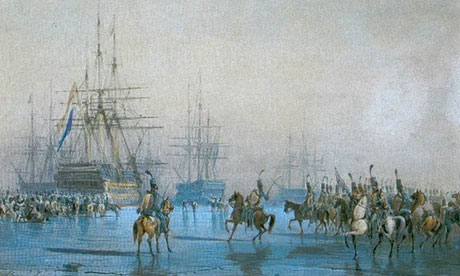
The battle between French cavalry and the Dutch fleet.
The Battle of Texel on January 23, 1795, occurred between French cavalry and the Dutch war fleet. It was the only time soldiers on horseback charged to attack a ship and emerged victorious.
This was primarily because the Dutch fleet had become trapped by ice in the Den Helder area. The horses were wrapped in cloth on their legs to walk on the ice, then launched the attack, instilling fear in their enemies. The cavalry soldiers approached and boarded the ship with their swords clenched between their teeth. A woman in charge of the canteen remarked that they probably wouldn’t have dared to do that if she hadn’t distributed a bit too much alcohol beforehand.
During the siege of Tenochtitlán in 1521, Spanish First Marquis Cortés constructed a tent to store gunpowder. However, the first cannonball fired soared into the air and landed on it, completely destroying the tent along with everything inside. This marked one of the last recorded military uses of the trebuchet.

Surgeon Joseph Lister performed a surgery with a 300% mortality rate.
Specifically, he performed a surgery in 1851 aimed at amputating a patient’s leg. However, while cutting, he accidentally severed the fingers of one of his assistants. Both the assistant and the patient subsequently died from necrosis. Additionally, one of the audience members watching the surgery also died from fright.


















































